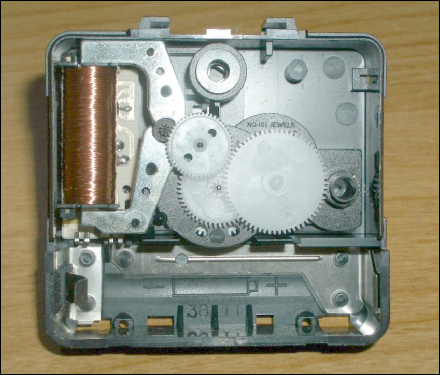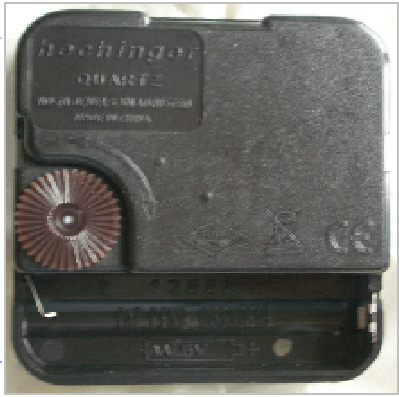





Repairs to Quartz Clock Movements
We have in the past been asked many times can we repair quartz movements and always resisted the temptation of saying yes until now. Many of our customers have clocks that were a special gift and have sentimental value, etc. They come to what many would consider the end of their useful working life and are ready to be discarded, but, of course they are not even though they are now no longer working. So, we have decided as so many of your require this service we will repair Hechinger Quartz units if at all possible. Other makes are on a case by case basis.
Why repair when you can simply replace the movement we hear you ask?
It is not always that simple as like all things quartz movements change and the technology moves on. If you view this page you will see that the Hechinger basic timepiece unit is now radically different in layout than it was say twenty to twenty five years ago. The principles are the same but the layout and components are not interchangeable.
Many of the original designs are not in production and use different power cells, whereas most modern units use “AA” cells the older types demanded “C” or even “D” cells. They also have different hand shafts and off-set seconds hand as opposed to the now almost universal centre seconds variety. The hands fitting type are now predominantly Eurostyle or Push-Fit.
Recently we have repaired a number of movements by exchanging gears and using NOS (New Old Stock) movements we have or can cannibalise. This has allowed a number of customers to continue enjoying their treasured timepiece.
Do quartz movements wear out?
Not as quickly as many would have you believe as the plastics they are made from are more or less self lubricating and there is no mainsprings or heavy weights loading them constantly. They do have pinions of sort but no real pivot holes in the conventional sense. They are with out doubt a marvel of modern engineering, cheap to mass produce and excellent in many environments with superior timekeeping abilities to many of their more costly rivals.
Some have been fitted to collectible clocks such as the Michael Graves Alessi Model which can sometimes be seen on ebaY selling for up to £500.00. Nobody is going to bin one of those but it is worth a lot more in working order. Yes, we have repaired several to date for customers in all parts of the globe and we have more booked in.
So, if you have any questions then please ask as we are only an email away. Oh, and when we say we repair quartz movements we also mean we check them out properly before return. We use regulated power supplies, oscilloscopes, frequency counters and multi-meter's to perform a proper health check on essential parts and functions. Yes, you do need a good understanding of electronics (qualified preferably) as well as the necessary clock repairing knowledge. If we can help let us know as we are not precious about quartz like many clock repairers, we happily embrace all timekeeping technology from sun dials and hour glasses to radio controlled movements governed by Atomic Time standards.

Hechinger Standard Movement later design
Hechinger Standard Movement early design

Rear cover removed later design
Rear cover removed early design
The above views show the two Hechinger Standard models early and later design. As you can see the layout internally is very different and the parts are not interchangeable. What you can see with the cover removed is the coil and metal cores, the indexing magnet with small gear and the top train wheels. On the early model you can just make out the underlying pcb which is clearly interconnected with the battery terminals via double spring contacts.
The pcb has mounted on it the integrated circuitry and the quartz crystal (32768 Hz operating frequency).
How does it all work?
Well they operate in basically the same manner which is as follows:
Battery or single cell as it is more correctly called (battery is more than one cell, battery of cells) causes the quartz crystal to oscillate at a very precise 32768 cycles per second which if divided down by the number 2 successively will eventually give the result of 1. It actually requires 15 divisions by 2 as 32768 is 2^15 which is shorthand for 2 to the power of 15 or the number 2 multiplied by it self 15 times.
What we end up with when the integrated circuit has divided 32768 by 2^15 is a single pulse that energises the coil which in turn causes the tiny magnet to be rotated and its gearing loosely meshed with the other gears starts the gear trains rotating. The gears have the correct pinions and gearing wheel teeth to ensure the ratios deliver the hour, minutes and seconds we all recognise. There is even intermediate gears to ensure both hour and minute hands turn in the same direction. Ingenious but simplicity itself. Due to their straight forward construction and use of cheap materials and manufacturing techniques quartz movements are easily mass produced and very reliable. They are also capable of long life as there is minimal wear and tear.
So we at Timetips will now offer a complete repair service for quartz movements (not simple movement replacement which we also offer) for movements that are no longer available or have unusual hand spindle lengths or fittings , etc. This service is so those sentimental clocks can once more perform their useful primary function and not be sitting there like an ornament.
If we can help whatever the make or model of quartz clock movement then please use our Contact Us page to get it in touch or simply email click the email image below and send pictures and as much information as possible.
